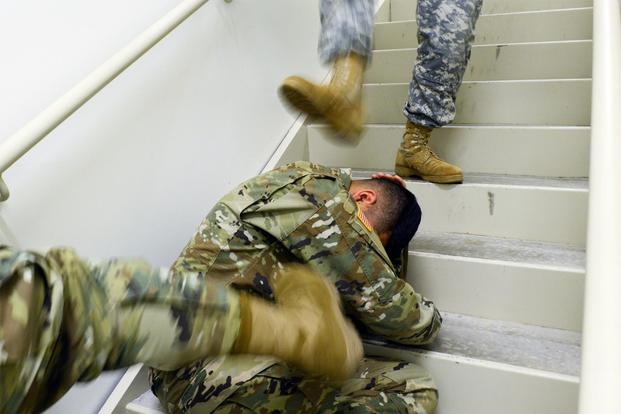A sweeping new Pentagon order addressing harassment prevention in the armed forces includes an important deadline: Dec. 1, when a first-of-its kind report on hazing in the ranks from all Defense Department components is due.
It's a long-anticipated step on the way to more effectively policing a practice that in recent years has been implicated in multiple deaths.
The 23-page harassment order, released Thursday, calls for reports on all kinds of harassment outlined in the document, including sexual harassment, discriminatory harassment, bullying, hazing, retaliation and reprisal.
But the data on hazing and bullying is due two months earlier than the rest, and will be more robust. A Dec. 23, 2015, memo from then-Deputy Secretary of Defense Robert Work updated the Pentagon's policy on hazing and called for the services to start tracking allegations of hazing for the first time, standardizing information and reporting cases to the Office of Diversity Management and Equal Opportunity.
A Pentagon spokeswoman, Air Force Maj. Carla Gleason, said so far about six months of data has been collected, but no report made. The services submit their reports at the end of the year, she said, they will include 18 months of data. It will kick off what will then be annual reports on hazing in the military.
The issue of hazing has been a black eye for the military, with egregious cases getting national attention and no comprehensive data about how often it happens.
In 2011, 21-year-old Lance Cpl. Harry Lew took his own life in Afghanistan after reportedly being hazed by three other Marines for falling asleep on watch. The same year, Army Pvt. Danny Chen, 19, killed himself in Afghanistan after being racially harassed and beaten by fellow soldiers.
More recently, 20-year-old Marine recruit Raheel Siddiqui jumped to his death from a barracks building at Parris Island, South Carolina after collapsing during physical training and being berated and slapped by a senior drill instructor.
A 2016 Government Accountability Office report faulted the Pentagon for failing to establish a uniform method among the services for tracking hazing episodes.
The order may stop short of creating a dedicated database for hazing, a step that the military is required by law to take due to a provision in the 2017 National Defense Authorization Act. Introduced by Rep. Jackie Speier, a California Democrat, this provision requires the secretary of defense to authorize a "comprehensive and consistent" data-collection system for hazing in the armed forces that includes demographic information, including the race and religion, of victims.
Gleason said, per the Pentagon order, the services would collect data using their own systems and means and the office of the secretary of defense would then assemble that information.
Another challenge in putting the data together is the Defense Department's definition of hazing. The definition used in the DoD order this week closely mirrors the one established in the 2015 memo, which replaced a narrower and less detailed 1997 definition.
In the new order, hazing is defined as a "form of harassment that ... physically or psychologically injures, or creates a risk of physical or psychological injury ... for the purpose of: initiation into, admission into, affiliation with, change in status or position within, or a condition for continued membership in any military or DoD civilian organization."
The definition excludes activities conducted for an acceptable military purpose, but adds that hazing can be conducted through social media and electronic devices, as well as in person.
Among activities constituting hazing are oral or written beration for the purposes of humiliation, "any form of initiation or congratulatory act" that includes striking or threatening to strike someone; encouraging someone to engage in "illegal, harmful, demeaning, or dangerous" activities; breaking the skin, as with rank insignia or badges in "pinning" rituals; branding, tattooing, shaving or painting someone; and forcing someone to consume food, water, or any other substance.
Zachary Spilman, an attorney who has practiced military law and remains a major in the Marine Corps Reserves, said the Pentagon's definition is problematically broad, particularly because it doesn't speak to the intent of the individual engaging in the activity described.
"You've got a policy here that covers innocent conduct," he said. "Giving someone a high five is physically striking them."
With hazing reports now being collected by the services, Spilman said his concern was that an overly broad definition would make the real scope of the hazing problem in the military hard to assess.
"There may or may not be a hazing crisis now," he said. "But ... change the definition of hazing to make it broad enough, and you will create a hazing crisis out of whole cloth."
-- Hope Hodge Seck can be reached at hope.seck@military.com. Follow her on Twitter at @HopeSeck.













